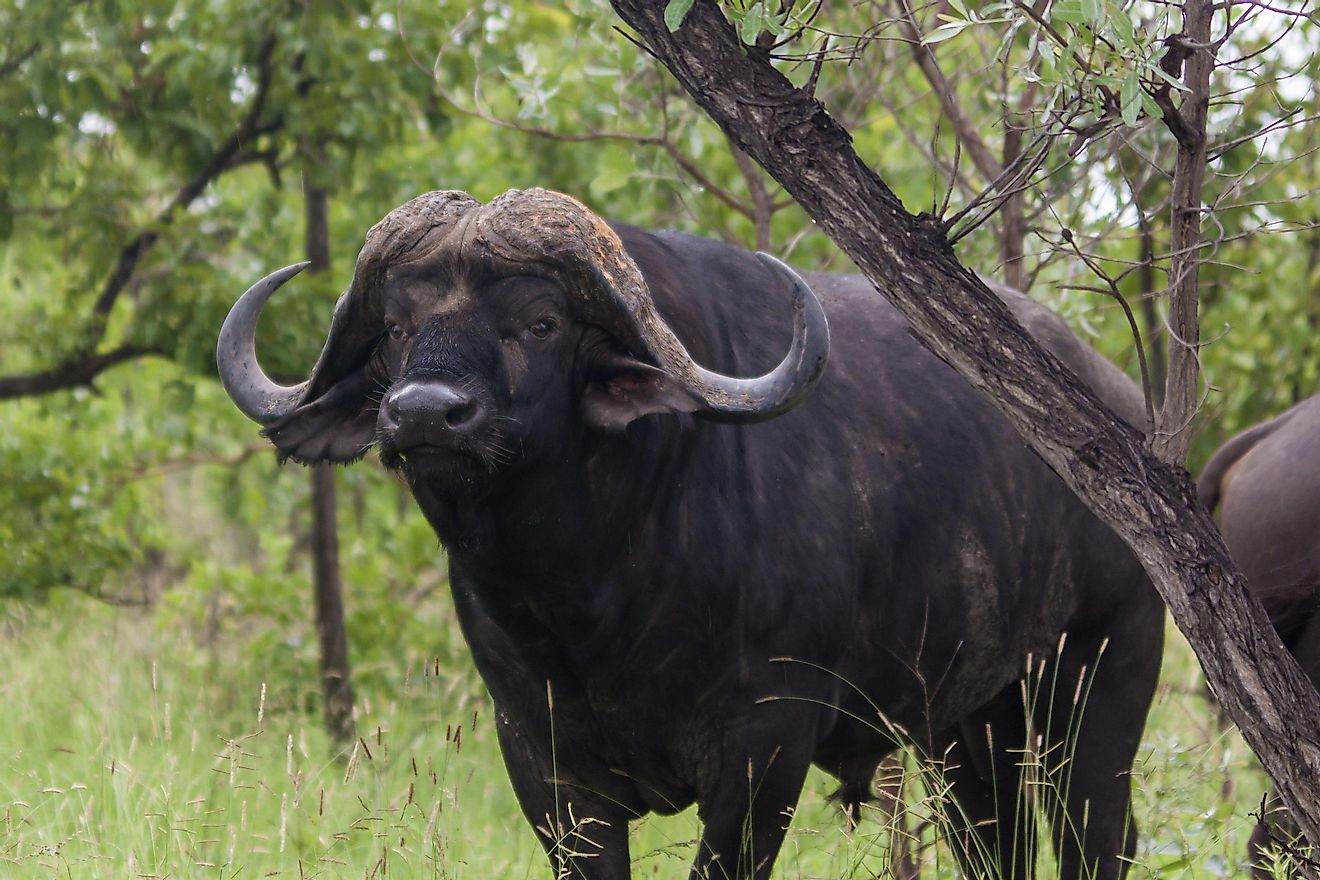Cape Buffalo Facts: Animals of Africa

5. Physical Description
Characterized by their size and unique horns, the Cape buffalo, also known as the Southern Savanna buffalo, is the largest of the four African buffalo subspecies, and the largest of all bovid species in Africa. "Bovid" refers to a group of split-hoofed animals, wherein all males have horns that come in a variety of shapes and sizes. Both male and female Cape buffalos have horns, but they also have a few distinct differences including the hump behind the males’ necks, and the occasional "dewlaps" found beneath their chins. Weighing up to a ton (907 kilograms) and reaching up to 5’7” (170 centimeters) in height, a single Cape buffalo would be enough to give any predator reason to pause and reconsider their hunt, ever mind a whole herd of them.
4. Diet
As herbivores, Cape buffalo can usually be found grazing in the open grasslands of the African savannas, wherein the greenery does not always grow in abundance in the east and south of Africa. Cape buffalo tend to stay within a close distance of water sources, as they require access to water to maintain hydration at least once a day. The way the buffalos avoid overgrazing in their habitat is by adopting a migration pattern, which is something many other species in the savanna do, including zebras and wildebeest. They will only return to a former feeding spot when its vegetation has grown enough to be grazed upon once again.
3. Habitat and Range
Cape buffalos are found in several eastern African countries and their habitat spans as far south as South Africa, though they typically avoid desert and subdesert areas throughout that range. Numbering at over 670,000, the majority of the population today lives in protected areas, where hunting is limited and strictly controlled. Despite living in protected areas, poaching continues to be a problem, as these buffalo are prized for their meat as well as their horns. Although they are listed as being a species of "Least Concern" by the IUCN Red List, they have experienced sharp declines in their populations in the past, largely due to poaching, habitat loss, and natural diseases. These include diseases spread to them from domestic livestock, such as rinderpest and anthrax.
2. Behavior
Out of the four African buffalo subspecies, the Cape buffalo is considered to be the most aggressive. They have been known to even show aggression towards African elephants, lions, and humans. Adult bulls may show aggression towards each other as well, in order to establish a hierarchy amongst themselves. Despite not being territorial creatures, the herd, mostly made up of adult females, will readily defend their calves against predators. As a result, most of the buffalos that are preyed on are stragglers or from smaller groups of males. When they are ready to move again, Cape buffaloes decide which direction to travel through a "democratic vote". Therein, these buffalo face the way they want to go and the dominant female will lead them where the majority pointed.
1. Reproduction
Although females are polyestrous and can mate and birth throughout the year, the mating peak of the mating season occurs at the end of the wet season. As mating season approaches, smaller male herds will join up with the larger, mixed herds to find females with whom to mate with. When a bull has found a female, he will “tend” her by following her around, and he will continue to do so until she becomes receptive or a more dominant male otherwise takes over. After they copulate, another male will immediately take over and continue tending the female. The average gestation period for Cape buffalos is 11 months. Their calves are normally weaned at about 10 months, and reach full physical maturity after around five years.











